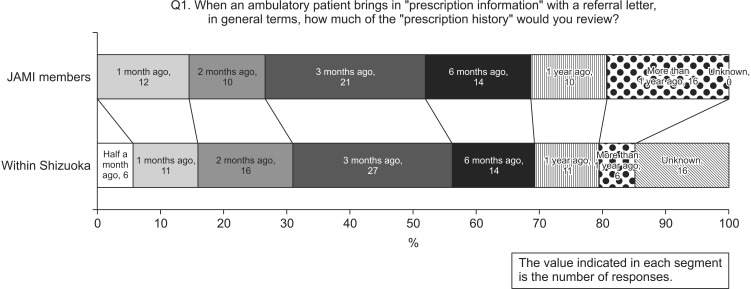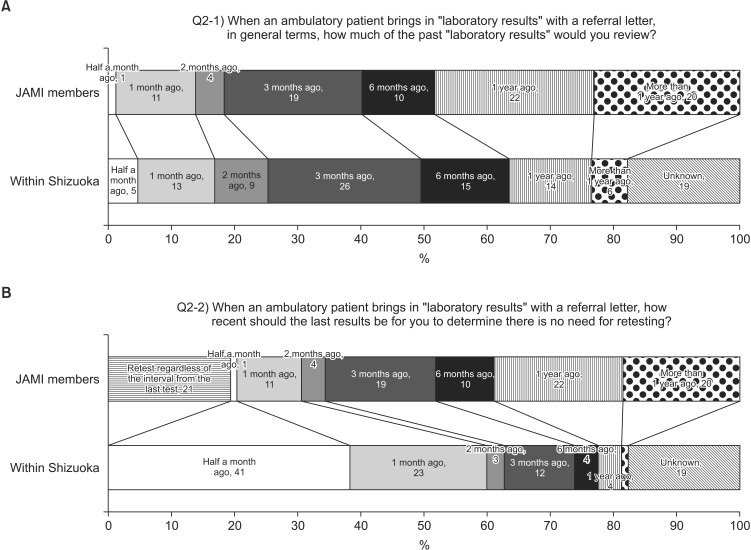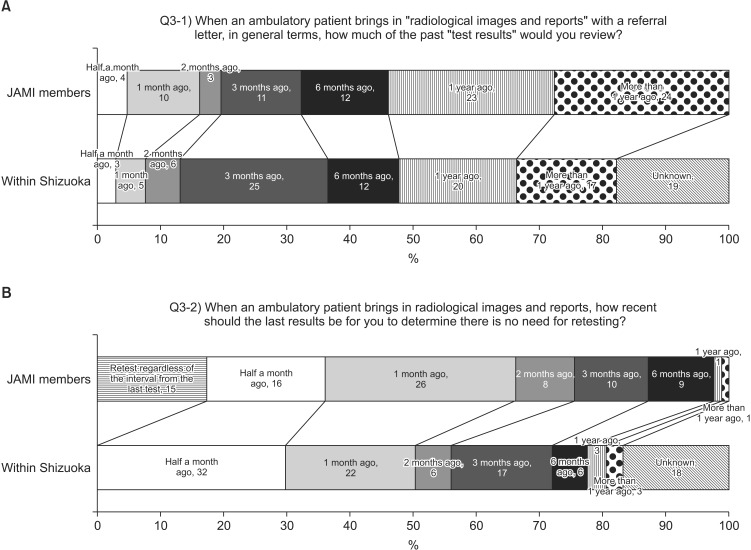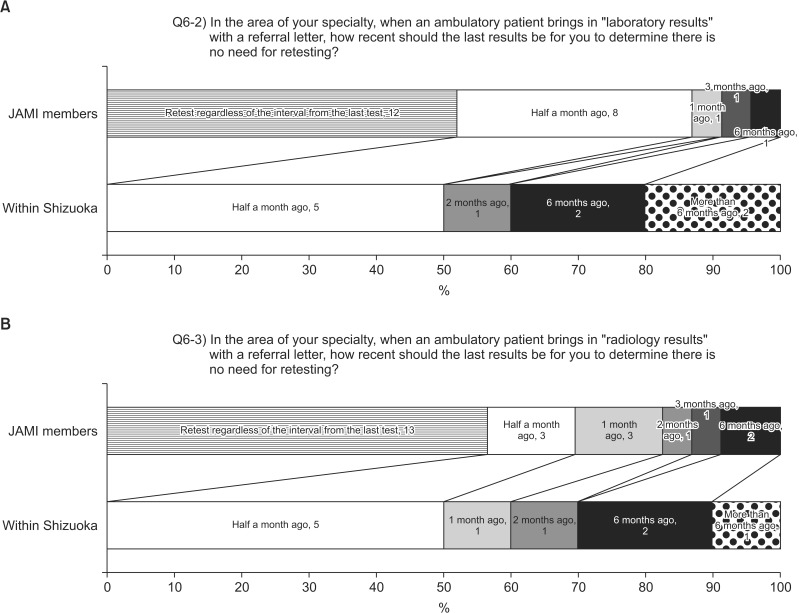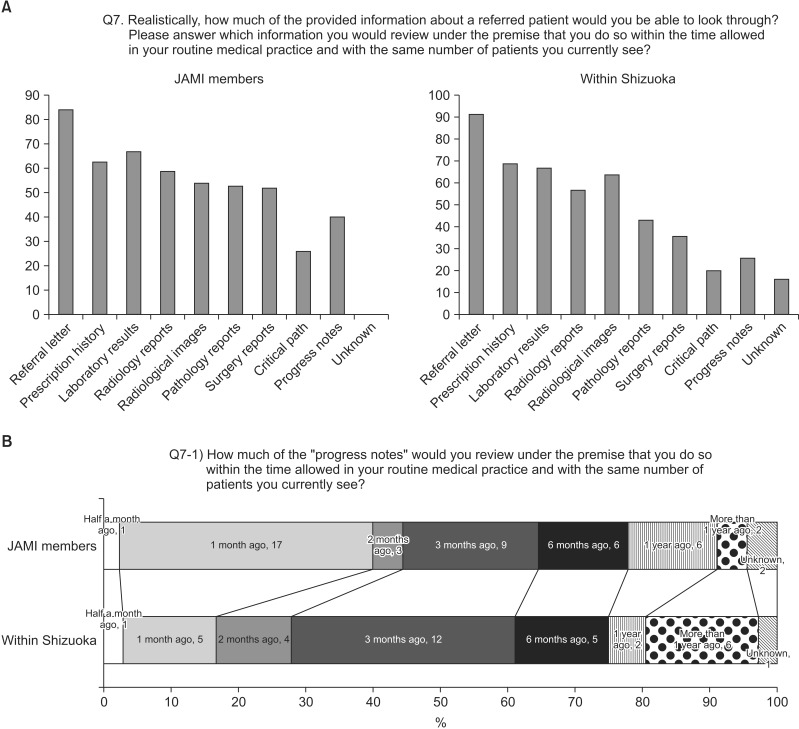Healthc Inform Res.
2017 Apr;23(2):126-134. 10.4258/hir.2017.23.2.126.
Survey on Usage of Medical Referral Information in Japanese Physicians
- Affiliations
-
- 1Department of Medical Informatics, National Center for Geriatrics and Gerontology, Obu, Japan. hiroshiw@ncgg.go.jp
- 2Department of Medical Informatics, Hamamatsu University School of Medicine, Hamamatsu, Japan.
- 3Department of Medical Informatics, University of Tokyo, Tokyo, Japan.
- KMID: 2378521
- DOI: http://doi.org/10.4258/hir.2017.23.2.126
Abstract
OBJECTIVES
The purpose of this survey was to explore physicians' opinions to identify an adequate time range for clinical information to be provided with a referral that would help minimize wasteful retesting.
METHODS
In 2011, we conducted a questionnaire survey of 193 physicians. Examining the degree of utilization of provided medical information, we determined the range of clinical information of referral documents.
RESULTS
Less than three months of prescription history and blood sample test results in patient referral was most frequent. Less than one year of image information was most frequent. Most doctors answered there is no need to repeat the same type of blood test in their institute when they had information less than half a month old. Less than half to one month of image information was most frequent. Also, it appeared many doctors think "fundamentally they do not change their mind from their own medical department standpoint." At the actual site, those who would even review referral clinical notes accounted for about 30% of all participants.
CONCLUSIONS
Medical referral eventually takes place after the establishment of mutual communication and should consider the workflow and system environment of the receiver of the information.
Keyword
MeSH Terms
Figure
Reference
-
1. Barrett B, Tyrer P, Tyrer H, Cooper S, Crawford MJ, Byford S. An examination of the factors that influence costs in medical patients with health anxiety. J Psychosom Res. 2012; 73(1):59–62. PMID: 22691561.
Article2. Bahous MC, Shadmi E. Health information exchange and information gaps in referrals to a pediatric emergency department. Int J Med Inform. 2016; 87:68–74. PMID: 26806713.3. Johnson T, Owens L. Survey response rate reporting in the professional literature. In : Proceedings of 58th Annual Meeting of the American Association for Public Opinion Research; 2003 May 15-18; Nashville, TN.
- Full Text Links
- Actions
-
Cited
- CITED
-
- Close
- Share
- Similar articles
-
- Development of WebBased Laboratory-Information-Accessing System
- Status of Interchange of Medical Imaging in Korea: A Questionnaire Survey of Physicians
- On Hansung Physicians Association
- A study on the referral of outpatient from the department of family medicine to other medical department
- The Analysis of Boundary of Laboratory Test Information That is Referred on Internet

